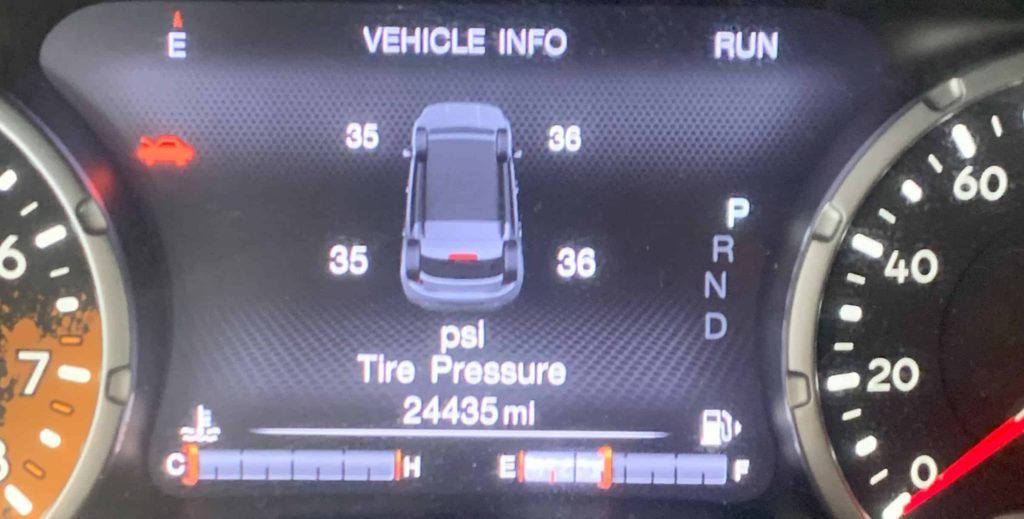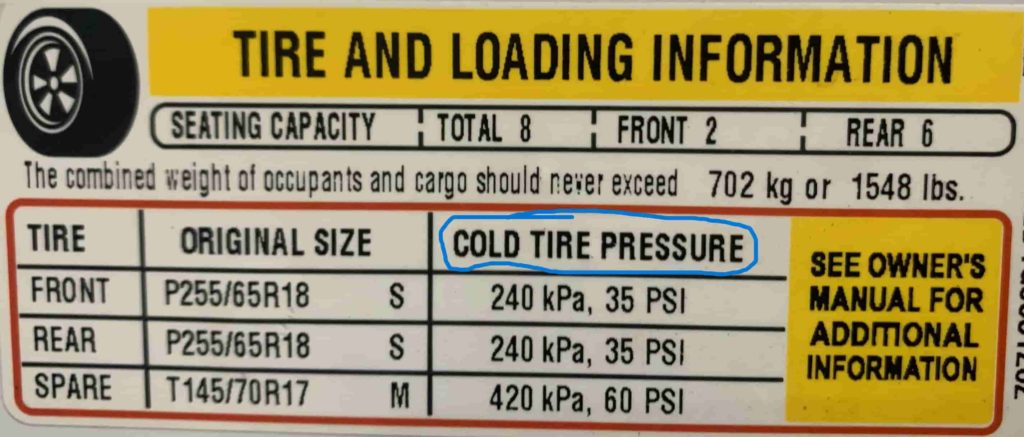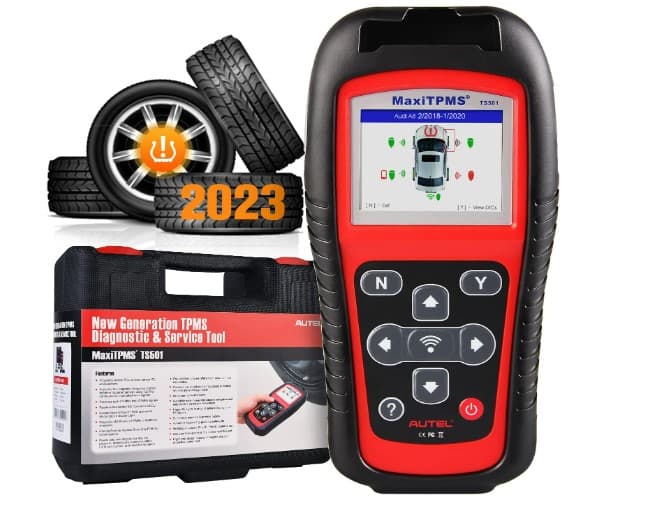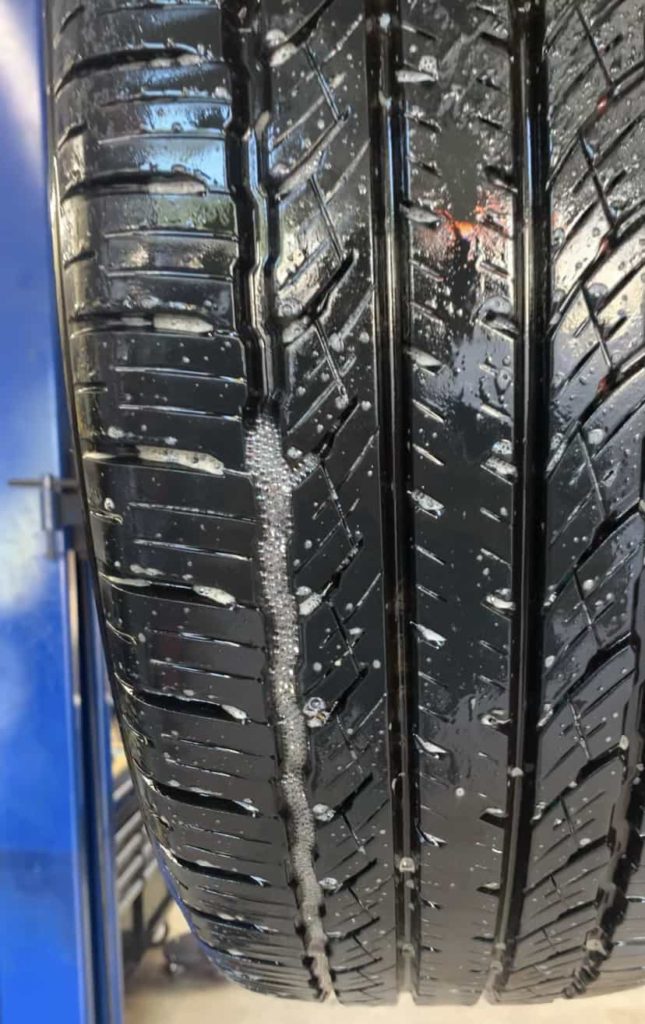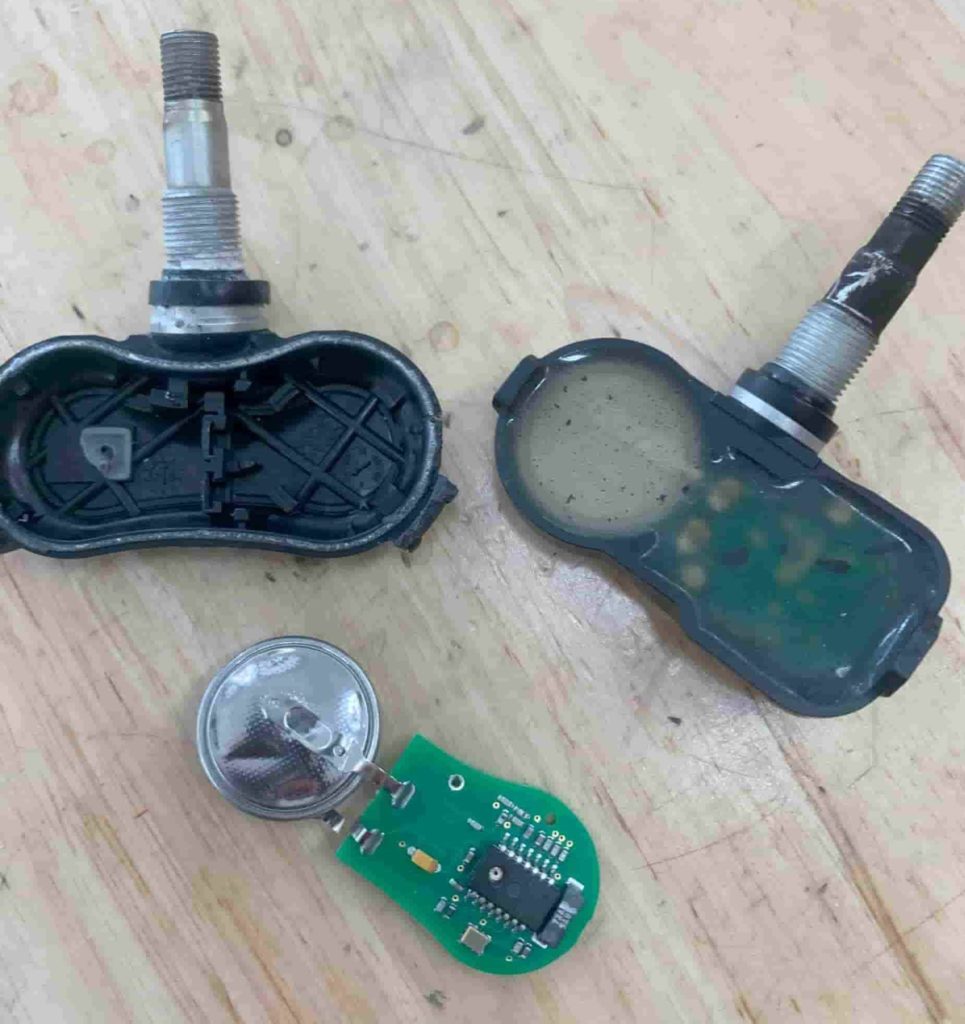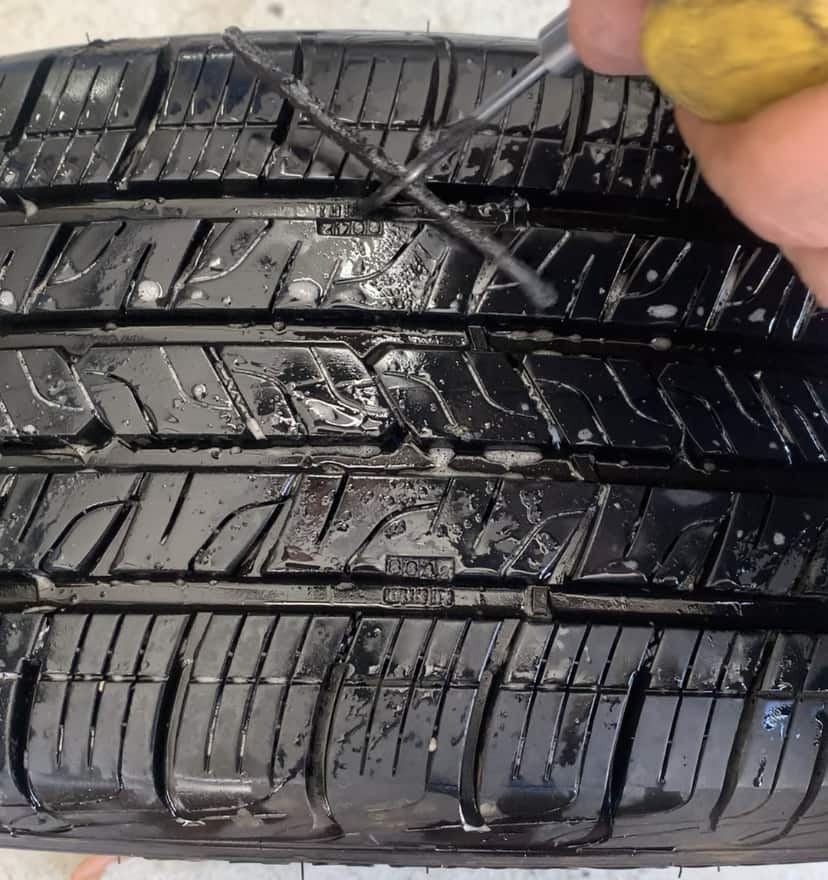How Does the Jeep Renegade Tire Pressure System Work?
The Jeep Renegade’s Tire Pressure Monitoring System (TPMS) is an underrated and necessary system designed to monitor the air pressure inside the tires in the Jeep Renegade. Here’s how it works:
1. Sensors Inside the Wheels and Tires
Direct TPMS: The Jeep Renegade uses a direct TPMS, where it uses sensors located inside each tire.
Pressure Reading: These sensors measure the current tire pressure and temperature within the tire and each run on their own battery.
2. Wireless Communication
Transmission to ECU: The sensors transmit the pressure information wirelessly to the Engine Control Unit (ECU). The information travels from the sensors to a TPMS receiver module and then finally to the main ECU. The sensors send information via wireless radio frequency at either 315 Mhz or 433 Mhz.
Communication Frequency: This transmission usually occurs at regular intervals, but it can become more frequent if a sudden change in pressure is detected or if there is a loss of communication.
3. Data Analysis and Interpretation
Comparison with Recommended Pressure: The system compares the received pressure data with the pre-set optimal pressure levels set by Jeep for the Jeep Renegade.
4. TPMS Warning and Display
Low Tire Pressure Warning: The TPMS Light is a yellow exclamation point inside parentheses that will illuminate in the instrument cluster as well as a “LOW TIRE PRESSURE” message will display on the infotainment display screen when a tire is low on air. An “Inflate to XX” message will be displayed on the current tire pressure screen and a chime will also sound when tire pressure is low in one or more of the tires. All of these warning messages are telling the driver to stop and check the tire pressure because one or more tires is low on air.
Jeep Renegade Low Tire Pressure Light Reset Procedure
Adjust and set the tire pressure in all 4 tires to the exact recommended tire pressures.
After setting the tires to the correct pressures, drive the Jeep Renegade for 15-20 minutes at speeds above 15 Mph.
While driving, the tire pressure monitoring system will automatically reset and update the current tire pressures on the display screen.
As long as the Jeep Renegade tire pressures remain at the correct pressures, the tire light will stay off.
The Jeep Renegade does not have a dedicated tire pressure reset button.
What Can Cause The Jeep Renegade Low Tire Pressure Light to Turn On?
Malfunctioning Sensors in TPMS: If the sensors in the Jeep Renegade TPMS are defective or have weakened batteries, the system will not function correctly.
Loss of Tire Air Pressure: There are many potential causes for a tire to lose air. Factors such as temperature fluctuations, punctures, leaks in valve stems or tire bead seals, wheel cracks, tire bubbles, changes in altitude, natural pressure reduction, and dry-rot can all lead to a decrease in tire air pressure.
Misreading After Tire Rotations: Failing to reset the TPMS after rotating or replacing tires may trigger the warning light, as the system may misinterpret the positions of the tires.
Breakage of TPMS Sensor: Carelessness while mounting a new tire can easily result in breaking a TPMS sensor.
Incorrect Tire Pressure: Inflating tires to excessively high or low pressures can cause issues.
Radio Frequency Interference: Electronic devices that emit radio frequencies similar to those of TPMS sensors (315 Mhz or 433 Mhz) can potentially interfere with the system, causing incorrect pressure readings or complete malfunctions.
Damage to TPMS Receiver: The TPMS receiver module is a small box with electronics in it usually hidden behind the glove box. The module consists of a plug with a connector and wires leading to other components within the ECU. Any harm to the wires or connectors linked to the TPMS receiver will lead to TPMS error and a malfunction in the system.
Installation of Wheels Lacking Sensors: Using wheels that lack tire pressure sensors on the Jeep Renegade will result in a TPMS malfunction. This includes the spare tire, which is not equipped with a pressure sensor.
Understanding Tires
How Does Weather Affect the Jeep Renegade Tire Pressure?
Weather can have a notable impact on tire pressure in the Jeep Renegade. As temperatures drop the air inside the tires contracts causing a decrease in pressure. Conversely, in hot weather the air expands and causes an increase in pressure. Weather fluctuations are a very common reason why the low tire pressure warning light will turn on. A commonly accepted guideline is that with every 10°F fluctuation in air temperature, tire pressure will correspondingly alter by approximately 1 Psi, either increasing or decreasing in the same direction as the temperature change.
What is "Cold" Recommended Tire Pressure?
The term “cold” tire pressure describes the condition of the tires when they have sufficiently rested and cooled to the surrounding air temperature, devoid of the heat produced by driving. Tires are considered “cold” if the Jeep Renegade has been stationary for a minimum of three hours or has been driven less than a mile following this rest period. This “cold” state serves as the benchmark offering the most precise assessment of tire pressure because it’s not influenced by the temporary heat expansion caused by driving. It establishes the norm by which tire pressures are typically determined and evaluated. This is why the tire placard with the recommended tire pressure refers to the pressure as “cold tire pressure”.
How to Check the Jeep Renegade Tire Pressure
Find the Recommended Pressure: Locate the recommended tire pressure for your Jeep Renegade on the yellow and white placard sticker inside the driver’s side door frame.
Wait for “Cold” Tires: To ensure accuracy, make sure the tires are cold!
Tire Pressure Gauge: Obtain a quality digital tire pressure gauge.
Remove the Valve Cap: Remove the valve caps and keep them somewhere safe.
Place the Gauge on the Valve Stem: Press the tire pressure gauge onto the valve stem. You’ll hear a hiss as you form a seal between the gauge and valve stem.
Read the Pressure: Check the reading on the gauge and compare it to the Jeep Renegade recommended pressure.
Adjust Pressure if Needed: If the pressure is too high or too low, adjust it accordingly. You can release air by pressing in the valve stem core.
Replace the Valve Cap: Once you’ve checked and adjusted the pressure, don’t forget to screw the valve caps back onto the valve stems.
Repeat for All Tires: Follow the same process for the other tires.
2022 Jeep Renegade Wheel Size and Tire Pressure
TIRE SIZE | FRONT PSI | REAR PSI |
215/60R17 | 35 | 35 |
215/65R16 | 35 | 35 |
215/65R17 | 35 | 35 |
235/45R19 | 35 | 35 |
SPARE | 60 | 60 |
Impacts of Driving the Jeep Renegade With Low Air Pressure
Driving with low tire pressure in the Jeep Renegade can have significant negative impacts on multiple fronts:
Reduced Fuel Efficiency: Low tire pressure increases rolling resistance which leads to more fuel consumption.
Poor Handling: The vehicle’s handling and responsiveness may become slow and the road noise will increase.
Increased Tire Wear: Tires with insufficient pressure wear out quickly, especially on the edges of the tread.
Risk of Tire Damage: Driving with low pressure can cause structural damage to the tires, leading to issues like tire bubbles or even blowouts.
Uneven Wear: Low pressure in one or more tires can lead to uneven tread and parts wear that causes alignment problems and uneven driving.
Environmental Impact: Reduced fuel efficiency means more emissions and wearing out tires quickly means more waste, both contributing to a larger carbon footprint.
Troubleshooting Jeep Renegade Low Tire Pressure Issues
Should you encounter difficulties in switching off or resetting the tire pressure light on your Jeep Renegade, try any of these solutions:
Solution 1: Is There a Tire Losing Air?
The main reason for the Jeep Renegade’s low tire pressure light to come on is usually a leak that leads to reduced tire pressure. If you inflate the tire that is under-pressurized and the warning light switches off or resets following the reset process, only for it to come back on—whether that’s in a matter of minutes, hours, or days—it is a compelling indication that a leak is present in that tire or wheel. Now it’s time to find the leak!
Solution 2: Clear the Jeep Renegade DTC's
The Jeep Renegade low tire pressure light can be manually erased by clearing the temporary TPMS error codes in the vehicle’s computer. This can be achieved by disconnecting the main 12-volt battery and thereby cutting off power to the Engine Control Unit (ECU). Doing so erases all temporary DTC (Diagnostic Trouble Code) error codes, including the one triggering the tire pressure light. When you reconnect the battery, the Jeep Renegade will begin a “relearning” phase. To enable the sensors to “relearn,” you must drive at a consistent speed of 50 mph for a minimum of 30 minutes after reconnecting the battery. If the tire light switches off following this procedure but returns later on, it may signal that a tire pressure sensor’s battery is weakening and the sensor needs to be replaced or you do in fact have a tire leak.
Solution 3: Find Which Tire Sensors Need to Be Replaced
If the low tire pressure light comes on and you think it might be due to a sensor’s weak battery (as indicated by the tire light flashing before staying on), you can evaluate each sensor using a TPMS diagnostic tool. This process remains the same irrespective of the specific make, model, or brand of TPMS diagnostic tool you are using. To examine each sensor, place the TPMS tool near the valve stem and select the “test” or “trigger” option on the device. After inspecting all four sensors the tool will provide you with a summary of the battery condition for each one. If any sensor shows a “low” status, fails to provide an update, or doesn’t register at all, that specific TPMS sensor needs to be replaced.
Solution 4: The Low Tire Light Turns On and Off On its Own
If the tire pressure light in your Jeep Renegade turns on when you start the vehicle and then goes off on its own as you begin to drive, it signifies that the tire pressure is slightly below the recommended 35 Psi. This can happen with cold or undriven on tires and then as they warm up the pressure increases and the tire light turns off. To rectify this issue ensure that the front and rear tires are all at exactly 35 Psi.
Solution 5: Overinflate the Jeep Renegade Tires
When nothing else seems to keep off the tire pressure light, we recommend releasing some air and then overfilling the tires to stun the sensors into communication. First, release about 10 or 15 Psi by pressing on the valve stem core and then filling the tires to approximately 39-40 Psi (4-5 Psi overfilled). The next step is to drive your Jeep Renegade with the overinflated tires for a few miles at speeds over 15 Mph. After a few laps around the neighborhood, release the excess air so that the tires are back to the optimal 35 Psi and then take the Jeep for another ride. If the tire light turns off and then turns back on as you’re driving, you likely have an air leak in one or more tires.
How to Find an Air Pressure Leak in a Tire
Start by checking the air pressure in all four tires of your Jeep Renegade to identify the one that’s low on air. Inflate the underinflated tire to at least 35 Psi (this process won’t work if the tire is too low on air). Next, using a spray bottle filled with a mixture of water and soap (or a commercial cleaner like Windex) thoroughly spray the entire tire. Be sure that you cover all areas including the bead region of the wheel and the valve stem so that the whole tire is soaked. Allow the soapy mixture to settle for a few moments and then carefully inspect the tire for small bubbles. If there’s a puncture, leak, or any escape of air, the leaking air will create tiny bubbles at the source of the leak. Find the bubbles and you’ve located the leak!
Jeep Renegade Tire Pressure Sensor Batteries
Each wheel and tire of the Jeep Renegade is equipped with a TPMS sensor and every sensor is powered by its own battery. These batteries are made of silver-oxide and look similar to those found in wristwatches. They are encased in a plastic shell and soldered directly to the sensor’s microcontroller. They are not replaceable. The batteries usually last around 5-10 years and when they get low on power or completely run out of juice, the sensor must be replaced. The lifespan of each sensor battery can be impacted by many factors and just because one sensor battery dies does not mean all the other sensors need to be replaced.
Frequent Tire Pressure Questions
Is It Safe to Drive with the Jeep Renegade TPMS Light On?
When your Jeep Renegade low tire pressure light comes on, pull over and check the tire pressures as soon as possible. To find out if it’s safe and how safe it is, you need to know WHY the low tire pressure light is on. If there is an air pressure issue, it’s not safe to keep driving.
What is a TPMS Malfunction?
A malfunction in the Jeep Renegade’s tire pressure system occurs when the TPMS receiver module loses communication with one or more of the tire pressure sensors. In such a case, the low tire pressure light (depicted by a yellow exclamation mark) will blink for about 75 seconds before remaining continuously illuminated. The information display screen will also show the message “SERVICE TPM SYSTEM.” This is why a TPMS malfunction occurs when driving with the spare tire on (No sensor in spare tire) . This alert will recur every time the Jeep Renegade’s engine is started until the problem is resolved. It’s important to note that a TPMS malfunction is not indicative of low tire pressure but rather a problem with the tire monitoring system itself.
Are Tire Plugs Safe to Use?
Tire plugs are a safe and reliable way to fix a punctured tire. When tire plugs are installed correctly they will last the life of the tire. Do not use tire plugs on the sidewall of a tire.
Are Tire Sealants Safe to Use on Flat Tires?
Tire sealants should only be used as a last resort or in an emergency situation. Tire sealants can damage the electronics of the tire pressure sensor as well as disturb the balance of a tire. After using a tire sealant, have the pressure sensor and the tire cleaned by a professional.
Everything in this article is applicable to all Jeep Renegade models and versions including the Jeep Renegade Latitude, Trailhawk, Limited, Altitude, and Upland.
Please note that this blog post contains Amazon affiliate links. This means that if you make a purchase through one of these links, we at TPMSRESET.COM may earn a small commission at no extra cost to you. We only recommend products that we personally use and believe in. Thank you for supporting us.


